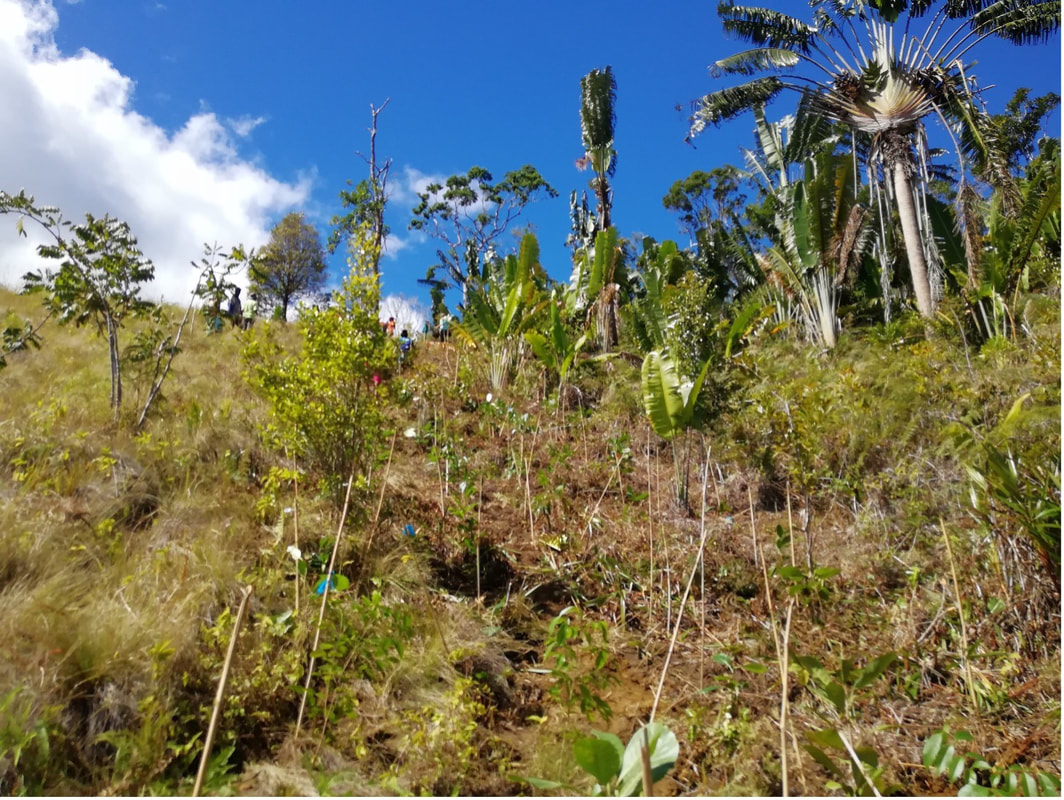|
Text by Fetratiana Rakotomanga
We began our wonderful way in Antananarivo (Tana), where I met my mentor and several other members of the Razafindratsima lab. These connections and planning meetings set a strong foundation to strengthen our knowledge, skills and experiences. Our fieldwork had two different parts, the first month was held at KAFS or Kianjavato Ahmason Field Station, Vatovavy region. The place was calm and peaceful. The friendly team we worked with made it more pleasant too. We had the chance to participate in one of their plantation events in a large gap surrounded by forest. The astonishing view from famous mountains such as Sangasanga and Vatolahy shows how the complex and interesting landscape might influence the vegetation, especially the view from the top of Vatovavy, the region’s namesake. That view was memorable. The 11th of August, we left Kianjavato, heading to Marojejy. We were sad to leave the great team at Kianjavato but Marojejy National Park still held a special gift for us.
I enjoyed the contrast between two weeks inside the humid forest and two days in the city of Sambava. Staying in the forest felt like spending two weeks in paradise, as our guide Dezy always says, and then we came back to the civilization again for two days for supplies. Do not let me forget to say that the song of the stream and all the birds near every camp that we have been in gave us sweet dreams after hard work. I can say that I loved our fieldwork! Thanks also to our collaborators at Lemur Conservation Foundation (LCF) who gave us magnificent days near the ocean when we were out of the forest. Having a guide that is specialized in mammals and amphibians increased considerably our chance to see many endemic frogs like Mantella sp., Boophis sp.; reptile like Brookesia, almost all iconic birds and amphibians that Marojejy is known for, and also the “bokimbolo”: Hapalemur occidentalis that we can see very near at Camp 1. (Photo 6) Before leaving the first site, we made the hike of 5.1 km and over 4,000ft in elevation to the “sommet” the two last days. On our way, we saw the Helmet Vanga : Euryceros prevostii. We spent a night in camp 3, a very cold and quiet camp it was. We did not feel very lucky arriving at the top with rain, but it was and will always be a part of the adventure and still we had a wonderful experience. Sadly, during our fieldwork, we also witnessed many activities that threatened the ecosystem including forest clearance, wood harvesting and some lemur traps. These activities can have a huge impact on the biodiversity that the park shelters. Much work has been done before to try to prevent these illegal activities and conserve the forest, but there is still more to do, so we encourage you to stand with us for the sake of our nature. These ongoing threats to biodiversity show us up close how reforestation (the main research of my mentor) is important.
There is always a starting point for everyone but do not let that make you feel that you are not good enough. There will always be people who have already gone through your stage willing to help you, so I just want to say: “take the chance, give your best and enjoy”.
|
We're using this space to share updates on our adventures in the field. Archives
May 2024
Categories
All
|










 RSS Feed
RSS Feed
